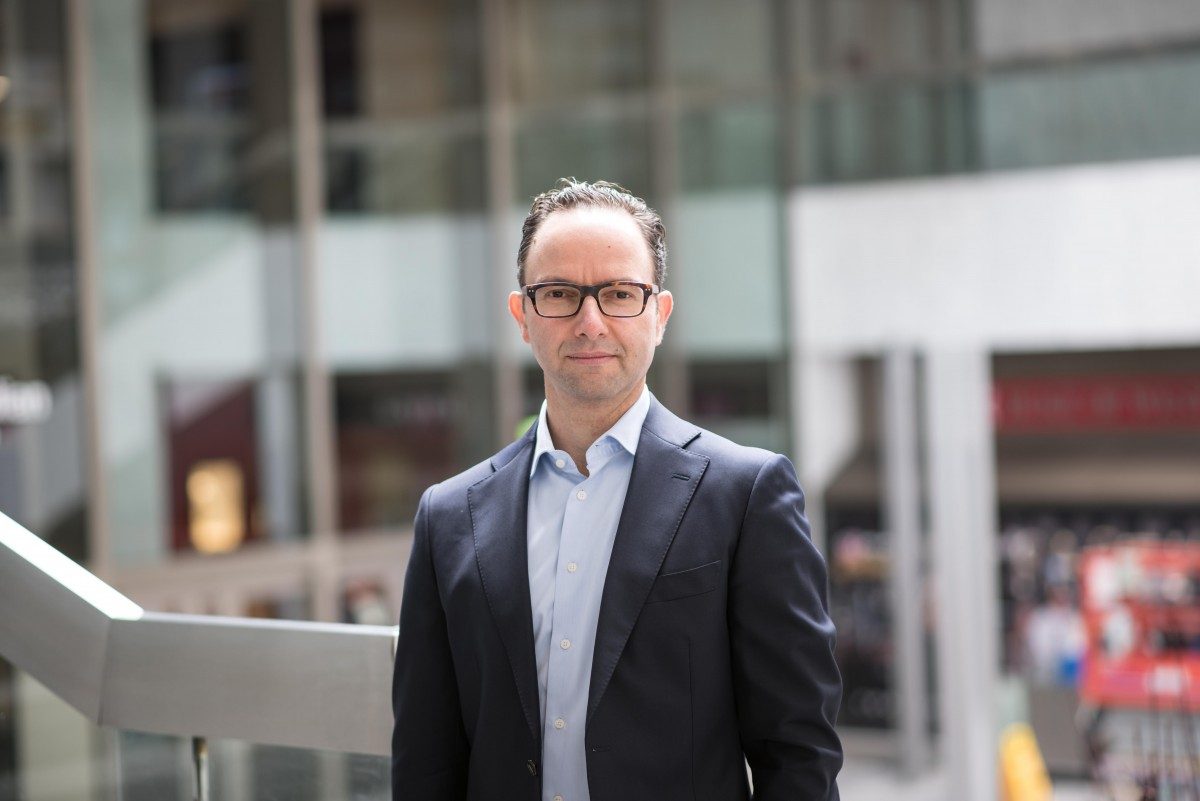
Asper alumnus Ian Schnoor [BComm(Hons)/96], Principal and Founder of The Marquee Group
Another kind of modeling career
Without a magical crystal ball to help them predict future events, financial analysts often turn to the next best thing: financial modelers such as Asper alumnus Ian Schnoor [BComm(Hons)/96].
Financial modeling is a technique that maps out a company’s likely future performance. Analysts often use Microsoft Excel spreadsheets to build their models, which are simplified, mathematical abstractions of complex, real-world variables.
“The goals of financial modeling are many, but may include forecasting cash flow, planning for what-if scenarios, predicting the results of management decision-making, calculating the cost of capital, and estimating the future performance of companies after a merger or acquisition has taken place,” explains Schnoor.
Based in Toronto, he has grown his financial modeling firm, The Marquee Group, into one of “Canada’s Fastest-Growing Companies” as ranked by Canadian Business and PROFIT magazines’ 28th annual PROFIT 500 report.
Named after Marquis Crescent, the street where Schnoor grew up in Winnipeg’s North End, Marquee offers not only financial modeling consulting services, but training programs used today by every Canadian bank, as well as pension funds and business schools. Thousands of finance professionals and students in Canada, the United States, the United Kingdom, Mexico, Australia and China have trained under Schnoor or one of his associates. Marquee also offers the only financial modeling accreditation exam in Canada.
“Companies become a part of the PROFIT 500 through innovative thinking, smart strategy and sheer grit,” says James Cowan, Editor-in-chief of PROFIT and Canadian Business.
“Sheer grit” would certainly describe Schnoor, whose career has been marked at every step by determination and an uncompromising do-it-yourself attitude.
For one thing, sheer tenacity snagged him a Bay Street investment banking job straight out of business school at the U of M.
“Back then [in the Nineties], the world of investment banking existed primarily outside of Winnipeg,” he recalls. “I had to forge my own path to get there.”
That meant combing through the stacks at Dafoe Library for the address of every investment banking firm in Toronto, and mailing out hundreds of resumes. The tactic eventually paid off, and he began his career at BMO Nesbitt Burns as an investment banking analyst. He spent four years at BMO in a role that introduced him to Excel modeling. Next he worked at Citibank – “until the markets took a nose-dive in 2001.”
For Schnoor, however, the crash was less a setback than an opportunity to channel his financial modeling expertise into a profitable new direction.
“In the Nineties, banks would train their own people internally. After the crash, I learned that some were now outsourcing their training to US firms, and I thought, Why don’t I step in? Back when I was an Asper student, I was always the go-to tutoring guy for those tough finance courses, and I learned much of what I know now by teaching it to others. I knew I could build on that and do a good job.”
He hung out his shingle in 2002; hard work, satisfied customers and enthusiastic word of mouth did the rest. Before long, Schnoor was teaching financial modeling to new hires from each of Canada’s five biggest banks, plus National Bank, the pension funds, Caisse de depot et placement du Quebec, Canada Pension Plan, and others.
“I kept thinking it would all end eventually, until I realized I was bridging this gap between what people were learning in business schools and the hands-on technical skills companies were seeking in new hires.”
By 2005, says Schnoor, he was training every single new investment banker at every bank in Canada. “All the young stars from Ivey, Queen’s, U of T, Schulich, Laurier, McGill — they were all being taught by this guy from the U of M,” he laughs.
That meant he was also on the verge of drowning in more work than one person could possibly handle. “I was overwhelmed. I was working long days, training all over North America. I thought, I’m gonna die if I don’t find a way to scale up the business.”
That would prove no easy task, given that what had always made his courses so appealing to clients was his unique financial modeling expertise and effective teaching style – hard assets to replicate.
Schnoor solved that problem by meticulously training one associate, then another, to master his course content and teaching methods.
“One of my instructors estimated we spent 200 hours getting him ready for one day of teaching,” Schnoor says. “And this is someone who already came in with a high-caliber background in capital markets.”
Marquee now boasts a roster of eight financial modeling instructors, which means Schnoor can spend more time running the business and charting its future. Under his direction, Marquee has continued to expand. One of the company’s larger programs is the RBC New Hire Global Orientation , which trains 150 people every year.
“For that program, we’re going full-time in four different classrooms,” he says. “The instructors are so good, you can walk from room to room and hear one pick up where the other has left off.”
Schnoor foresees the demand for qualified financial modelers continuing to grow worldwide.
“Everyone wants these skills. We see tremendous opportunities in Canada, the US, Europe and Asia. The sky’s the limit, as long as we stay true to our roots.”







It’s great to see a former Asper finance student do so well. Congratulations on your financial acumen and outstanding entrepreneurship, Ian.